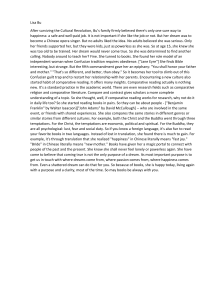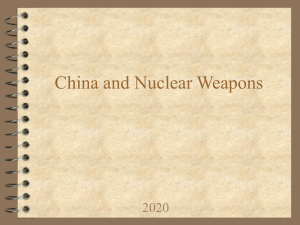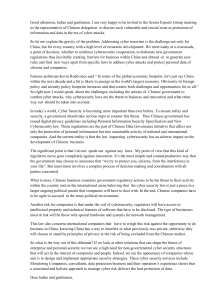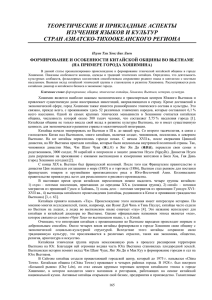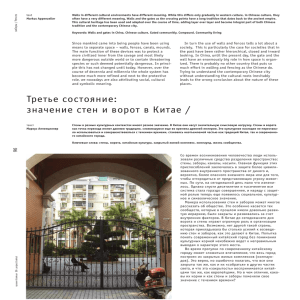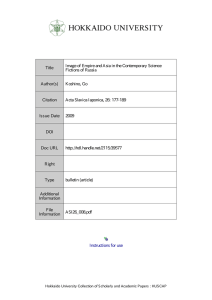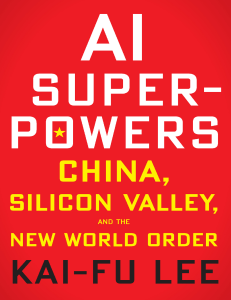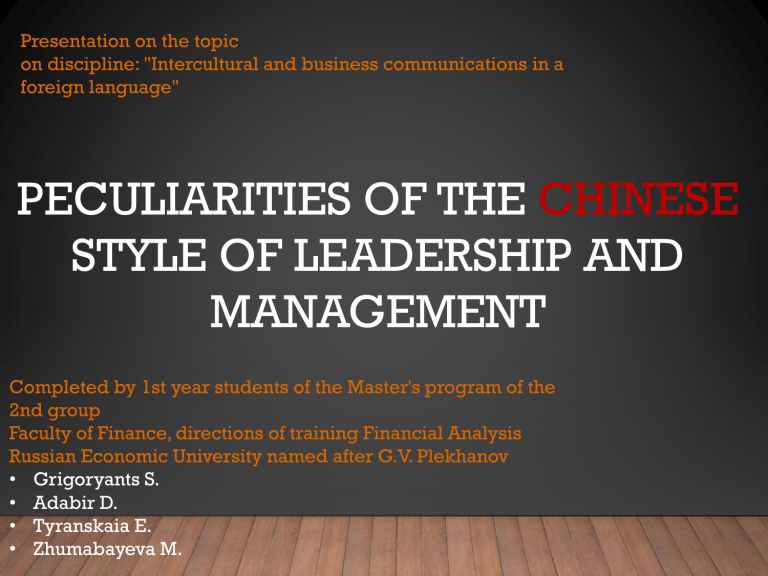
Presentation on the topic on discipline: "Intercultural and business communications in a foreign language" PECULIARITIES OF THE CHINESE STYLE OF LEADERSHIP AND MANAGEMENT Completed by 1st year students of the Master's program of the 2nd group Faculty of Finance, directions of training Financial Analysis Russian Economic University named after G.V. Plekhanov • Grigoryants S. • Adabir D. • Tyranskaia E. • Zhumabayeva M. CHINA • The Chinese business system has been evolving since the initiation of the economic reforms by Deng Xiaoping in 1978 • The urban industrial sector, under the command economy, was dominated by state enterprises, and funded by the central government • Greater autonomy has been granted to state enterprise managers as an incentive for improving performance. • The government policy since the 1990s has been to create conglomerates or multinationals from major state enterprises • The changing nature of the business systems is evident in the evolving nature of corporate governance, which is a hybrid of Western and Chinese values and norms Page 2 REFORM OF SOES • Industrial reform: Organizational efficiency and effectiveness competitiveness • Accountability: Make state enterprises directors and managers more accountable, and more domestically and globally competitive • Encouragement of Foreign Trade and Investment BUSINESS ETIQUETTE. • The western habit of shaking hands • Hugging and kissing as a way of greeting or goodbye is absolutely not acceptable. • It is considered impolite to show something to the finger • Only close friends can call a Chinese by name • An indispensable part of negotiations - gifts • It is customary in China to refuse a gift two or three times before accepting it. • If you donate several of the same items, there must be an even number, but not four. • A watch is the only gift to avoid (also sharp objects, alcoholic drinks, foreign currency and coins) CHINA’S SOCIALIST MARKET ECONOMY (CAVEATS) Social Inequality Labor Shortage High tech, Scientific Management Labor registration Technical manpower State initiative in corporate governance Wage increase Skilled management Technological infusion through FDI Environmental Degradation THE BASIS OF THE CHINESE MANAGEMENT MODEL • The Chinese mentality leaves an imprint on the attitude of employees to responsibilities and relationships in the company • Strict discipline, respect for superiors, lack of familiarity between superiors and subordinates • More compact management staff • Independence and self-sufficiency of employees • Strict division of labor THE DEVICE OF A TYPICAL LARGE CHINESE COMPANY • structure similar to American or European • main type - implementing companies • small management staff • • Foxconn - Executing company, assembles iPhones, manufactures devices for Huawei and Lenovo Out of 1.2 million employees, only 1000 managers A CHINESE APPROACH TO MANAGEMENT • China’s business leaders manage people very differently. • China’s business leaders are controlling companies from the top. • Chinese companies produce more in-house and pay employees less than their Western counterparts, so Chinese enterprises can afford to employ more people. • Developing products quickly. • Building relationships with government and other institutions is critical in China. 5 KEY CHARACTERISTICS OF CHINESE MANAGEMENT IN THE WORKPLACE Authoritarian Humanistic Guanxi dependent Slower paced Distance of power 10 CHARACTERISTICS OF MODERN CHINESE MANAGEMENT MODEL: Dynamism Adapting Reciprocity Coherence Flexibility Spirituality Complexity Discipline Naturalness Long-term development of the enterprise MANAGEMENT IN CHINESE: PRINCIPLES OF MANAGEMENT 12 Correction of names Foresight Personal responsibility Cyclicality Moral Nepotism Harmony Hierarchy and rituals Justification of awards and punishments Indirect impact Individual approach Point impact on the situation LEADERSHIP IN MAINLAND CHINA CHINESE LEADERSHIP MODELS Aim Method Findings Implications CHINESE LEADERSHIP: 5 CRITICAL DIFFERENCES WITH THE WEST The concept of “face” Communication styles Time to make decisions The notion of “guanxi” The Confucian concept of harmony CHINA'S MODERN APPROACH IN EXAMPLE • The key to success - a combination of approaches (for example Alibaba) • Jack Ma abandoned a strictly vertical structure • Divided the company into functional groups consisting of mini-teams (copied the structure of Google, Facebook) • Declares the conservative Chinese model is not suitable for modern times • Baidu, Tencent, Huawei, Xiaomi also began restructuring Let’s Take A Break!


